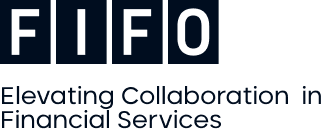by Bryan Perry
July 8, 2025
For the first six months of 2025, the bond market has performed better than most expected – or are even aware of. Through late June, U.S. bonds were about even with the S&P 500, as both were generating returns of close to 4% before the S&P sprinted higher going into the Fourth of July weekend. The outlook for the rest of 2025 looks good too, with the Federal Reserve poised to cut short-term rates in late July.
The S&P 500 has priced in a lot of good news, closing at 6,279 on July 3rd, but some published targets for the S&P 500 are being raised to 7,000 or higher by year’s end. Wall Street analysts have issued a wide range of S&P 500 year-end targets, reflecting both bullish optimism and cautious skepticism amid a volatile macro backdrop. Here is a snapshot of some of the latest S&P 500 2025 projections:
Graphs are for illustrative and discussion purposes only. Please read important disclosures at the end of this commentary.
This list clearly runs the gamut from two super bullish forecasts of an S&P reading of 7,000 to 7,100 (up 11% to 13% from here), and one super-bearish forecast (-29%), with three in the middle (up 4% to 7%).
This week, there are several major developments for the market to face, most importantly tomorrow’s July 9th deadline for the expiration of the “tariff pause,” with the White House woefully behind schedule on closing major trade deals with our key trading partners. Treasury Secretary Scott Bessent, Commerce Secretary Howard Lutnick, and Director of the National Economic Council Kevin Hassett have their work cut out for them if they are to secure a high number of deals they claim are “at or near” the finish line.
Another imminent challenge is Iran’s leadership is doubling down on controlling its society and salvaging its uranium enrichment program after the International Atomic Energy Agency (IAEA) officially withdrew its inspectors from Iran amid a deepening crisis following U.S. and Israeli airstrikes.
The U.S. and Israeli airstrikes severely damaged Iran’s nuclear infrastructure but they apparently did not eliminate its enriched uranium stockpile. One critical point continues to be largely overlooked: Iran’s stockpile of over 400 kilograms of highly enriched uranium (HEU enriched to 60% uranium 235) is already usable in weapons of delivery. This means Iran’s HEU may have been moved to secure locations before the attacks and could be used to make bombs without requiring further enrichment. Whether Iran’s HEU stockpile survived the attacks is a major conundrum facing Israel and the U.S.
Meanwhile, Russia is intensifying its attacks on Ukraine in what analysts are calling the most aggressive aerial campaign of that war to date, with massive drone and missile strikes. On July 3–4, Russia launched over 500 drones and missiles, including 539 drones and 11 missiles targeting Ukraine’s capital, Kyev. Russia launched 117 drones, striking 19 locations across Ukraine on July 5–6. Putin knows Trump wants no part of this war, stating last Friday, “The Ukraine situation — that’s a Biden deal. It’s not a Trump deal. I’m trying to get it finished off.” So, it appears, all attempts at a cease fire have failed.
Here at home, the One Big Beautiful Bill Act was passed; the banking sector passed the latest stress test with flying colors; mega AI deals are being cut by the market’s biggest tech companies that dominate the weightings of the major market indexes; and second-quarter earnings season will come into full bloom as of July 15-16, when the big money center banks post quarterly results. Investors will be paying closest attention to forward guidance offered up by market-leading companies in the face of tariff uncertainty.
Previously, President Trump announced that on July 9, countries would be notified of their new tariff rates, which could range from 10% to 70%. That means today is essentially the last day to strike a deal before the U.S. starts locking in tariff levels. However, Scott Bessent announced over the weekend that August 1 would be when the new tariff rates take effect, if no deal is reached. He emphasized that August 1 is not a new deadline, but rather the implementation date for tariffs reverting to steep levels announced on April 2. Based on how this situation has unfolded, perhaps August 1 buys 23 more days to do deals.
Based on these and other potential unforeseen developments, it would not be surprising to see the market take tomorrow’s July 9 deadline in stride, knowing that the August 1 “activation date” implies buying three more weeks to close trade deals during the first half of the earnings reporting season, leading up to the Federal Open Market Committee meeting slated for July 30. Up to now, the stock market has been incredibly resilient in fighting off most inherent risks and bearish data, opting to believe in the AI revolution as a generational investment opportunity that rivals or surpasses the evolution of the Internet.
Against this backdrop of inflation trending lower, the Fed seemed poised to cut rates a couple of times, so the case for bonds and bond equivalents looks more attractive now than at any previous time this year.
Investors may want to position some of their bond position in 5–7-year Treasuries yielding around 4%, municipals yielding 3% to 5%, or preferred stock yields of 6% or more. Mortgage securities yield around 5.5%, junk bond yields are around 7%, and REITs pay out an average 4%.
A blend of AI leading equities and income assets paying attractive yields might be just the right asset mix for the second half of the year. At this point, with stock prices way up and bond prices near their lows, the case to rotate some capital into income instruments is worthy of strong consideration.
The post 7-8-25: Bond Equivalents Should Shine in the Second Half Of 2025 appeared first on Navellier.





